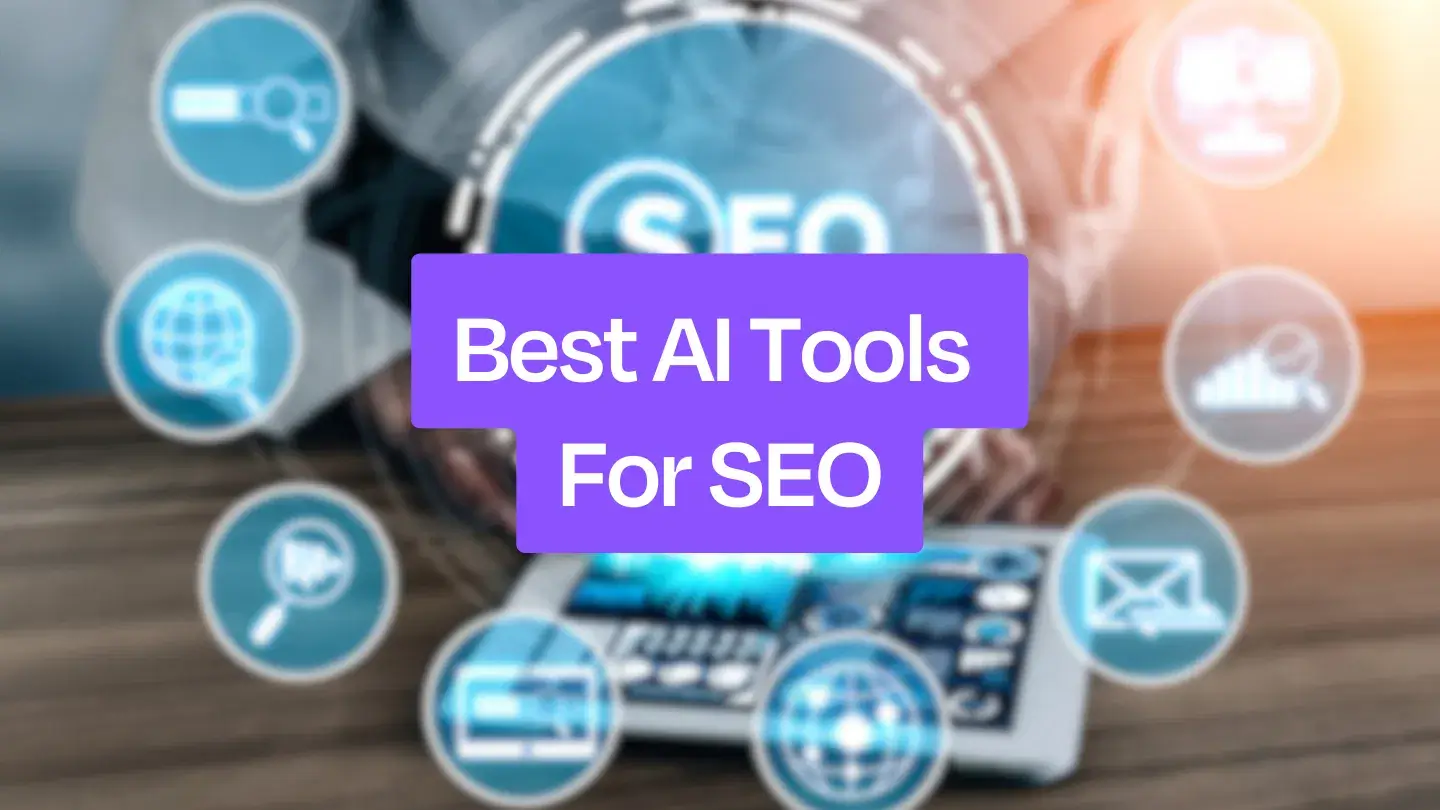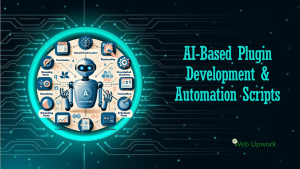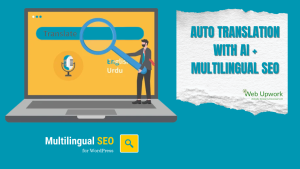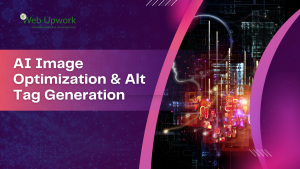In the digital age, where every click, every scroll, and every search can make or break a website’s success, SEO (Search Engine Optimisation) is no longer just about sprinkling the right keywords here and there. From my point of view, the arrival of AI-driven tools that automate SEO tasks is a game-changer. It’s not just about doing the same work faster. It’s about doing it smarter, with a strategic viewpoint. In this blog I will share what’s happening, why it matters, how it’s being used (especially in India), and what we — as website owners, testers, or content creators — should watch out for.
What’s happening in the news
Recently, there have been several developments showing that AI is reshaping how SEO is done:
For example, the platform Wix AI Visibility Overview was introduced — it helps websites monitor how they appear in AI-driven search environments (not just traditional Google search) and track how often their site is cited by generative AI systems.
In another piece of news, an Indian SEO firm ThatWare is reportedly even moving beyond standard AI and exploring “Quantum SEO” — showing how far the field is willing to go.
At the same time, industry articles note that in India AI SEO tools are becoming more accessible, helping with keyword analysis, content optimisation, technical audits.
From my vantage point, these show that SEO is being handed a new toolkit- and that toolkit uses automation, machine learning, large-data analysis. If websites don’t evolve, they risk becoming invisible in a much more competitive environment.
Why automated SEO with AI matters
Here are the key reasons why I feel strongly that we should take automated SEO via AI tools seriously:
Speed and efficiency
Traditional SEO tasks (keyword research, competitor analysis, content optimisation, internal linking audits) could take days or weeks. AI tools can compress that to hours or minutes. For example, one article notes that “SEO is radically different in 2025” because automation and AI can do many tasks that were manual.
For a website owner or blogger (as I am), this means more time for strategy and creative work, rather than repetitive tasks.
Better data-driven insights
AI tools can process vast amounts of data: keywords, search trends, user behaviour, semantic relationships. For instance, tools can cluster keywords, identify user intent, suggest which terms to target.
This gives a more realistic view of what users are truly searching, especially in a diverse market like India (multiple languages, devices, regions).
Scalability
For websites that have many pages (blogs, e-commerce, multiple categories) automating SEO tasks means you can optimise at scale. One article speaks to how AI tools support many pages, many keywords, many linking structures.
For Indian companies or small websites, this is crucial- you don’t always have a large SEO team, so tools help level the playing field.
Adapting to changing search paradigms
It’s clear that search is moving beyond classic Google keyword lists into voice, generative AI, answer engines (where user gets the answer directly without clicking many pages). One article speaks about “Generative Engine Optimisation (GEO)” being the next phase.
If a website doesn’t optimise for these new modes (AI-powered search results, voice queries, semantic searches) it may miss out.
Competitive edge
In India and globally, many websites will begin to adopt these AI powered SEO tools. If your website remains anchored in older methods (manual keyword lists, manual linking) you risk falling behind.
From my experience, even modest websites that use AI tools for SEO get better visibility, lower bounce rates, higher relevance.
Key elements of automated SEO with AI tools
From my point of view, to use AI tools effectively you should focus on certain core areas. These are what I consider vital for a website/blog owner:
Keyword & intent analysis
Use AI tools to not only get high-volume keywords but to understand why users search them (their intent). AI can group keywords, suggest latent semantic keywords (LSI), map out user pathways.Content optimisation and creation
AI can help draft content outlines, suggest headings, recommend linking, recommend metadata, and even generate drafts that you refine. For instance, tools help optimise content structure, headings, internal linking.Technical SEO & audits
Internal linking, site structure, schema markup, page speed, mobile-friendliness- AI can scan, detect issues, recommend fixes. In particular, for Indian audiences many devices are mobile first, so mobile optimisation matters.Monitoring & performance tracking
Using AI to track changes in rankings, changes in search visibility, drops in traffic, and even predicting future trends. AI can alert you to “something changed” or “this page lost traction”.Localisation & multilingual support
In India, this cannot be ignored. Users search in Hindi, English, regional languages; they use mobiles; they might search contextually. AI tools that support multilingual keyword research, region-specific behaviour are more valuable. The “Top 21 AI tools for digital marketing in India” article emphasises localisation.Human oversight & creativity
Very important: AI tools do not replace human judgement. From my viewpoint, AI gives you the data, the recommendations you must apply strategy, tone, brand voice, context. One article states explicitly that AI tools help but do not completely replace manual SEO or content creation.
What this means for website/blog owners
Since I am part of the digital ecosystem (owning a blog or website, or performing QA on web apps), here are my thoughts on how this trend affects me:
If I own a website (business, blog, service) I should plan SEO automation early. Not only rely on manual optimization once in a way. For example: set up tools that regularly audit site, check for new keywords, monitor drop-outs.
As a QA/tester (given my background in QA) I should include test cases around automated SEO: for example, check whether meta tags are being suggested or updated by AI tools, check internal links suggested by tool are accurate, check content readability isn’t compromised, check site speed and mobile rendering aren’t negatively impacted by automation.
I must balance between automation and quality/brand voice. Just because AI can generate optimisation suggestions or content doesn’t mean we push everything without review. Poor quality or cheesy content can harm SEO rather than help.
I need to consider budget and tool selection carefully. In India many AI-SEO tools are available, but price, integration, support for Indian markets matter. Some articles list many tools aimed at Indian marketers. Nucamp
For my blog content: I should use AI tools to generate topic ideas, optimise content for search intent, check readability, but still infuse my personal voice, local context (Indian English), cultural relevance.
A few fun insights
It’s interesting how an AI-SEO tool can suggest an internal link to an article I wrote six months ago- something I wouldn’t have thought of manually. That “machine suggestion” reminds me of a digital assistant saying: “hey, you forgot this”.
I once looked at my blog traffic and realised that a small change in meta description (suggested by an AI tool) improved my click-through rate. That felt almost like magic.
In India, I feel the multilingual piece is fun: you can target English readers and regional language readers differently and AI tools might help with that. If your keyword research tool identifies Hindi search terms, you might create Hindi-English hybrid content.
Also amusing: you might see an AI tool recommend “long-tail niche keyword search volume 0-10” and it feels odd- but sometimes those niche phrases bring traffic because someone is searching for them but no one else is targeting them.
Challenges & what to watch out for
From my viewpoint, there are some pitfalls in adopting automated SEO with AI tools:
Over-reliance on automation: If you simply let the tool run without human review, you may end up with content that sounds robotic, unnatural, or mis-targeted. Google and other search engines and users both value quality.
Poor data or localisation: If your AI tool is tuned to US/UK markets but you operate in India, you might get irrelevant suggestions. For Indian context you must ensure tool supports local languages, local search behaviour, mobile usage.
Cost vs benefit: Some tools are expensive; for a small website/blog you must ensure ROI. The “top AI SEO tools for 2025” article emphasises that you still need manual effort.
Technical integration and change management: Introducing AI SEO tools might require workflow changes, tool integration (CMS, analytics, linking), team training. Otherwise you might deploy but not use fully.
Search engine algorithm updates & AI search changes: SEO is already challenging; with AI search paradigms (voice, generative answers) emerging, you’ll need to adapt continuously. The “Generative Engine Optimisation (GEO)” article highlights this paradigm shift.
Maintaining human touch and brand authenticity: Automated optimisation must still preserve your brand voice, authenticity, user trust.
Website/blogs (especially in Indian context)
Here are actionable suggestions from me for website owners or bloggers in India:
Start with audit and baseline: Before applying AI tool, understand your current SEO performance (traffic, keywords, bounce, mobile speed, languages). This helps measure improvement.
Choose the right AI-SEO tool: Look for one that supports Indian languages, Indian search markets, mobile-first, integrates with your CMS (WordPress, etc).
Segment your audience: For Indian market you could segment by language (English, Hindi, regional), by device (mobile vs desktop), by region/city. Use AI to tailor for segments.
Use the tool for routine tasks but keep human oversight: For example, let AI propose keywords, but you select ones aligned with your brand. Let AI generate content outline, but you write refined final piece.
Update old content: One of the benefits of AI tools is that you can revisit older blog posts and optimise them (meta tags, internal links, updated statistics). This is often neglected.
Localise content: Use keywords in Hindi or regional languages if your audience is Indian. Ensure your content reads naturally in Indian English. Boldly blend cultural references, local idioms if appropriate.
Monitor and measure: Use analytics to track how AI-driven SEO changes are performing (higher page-views, lower bounce, improved rankings). If something isn’t improving, iterate.
Stay updated on search trends: Because AI search, voice search, generative answer engines are evolving, ensure your strategy adapts. For example: optimisation for question-formats, conversational queries, voice.
Keep mobile optimisation top priority: In India many users access via mobile, on varying networks. Speed, readability, minimal friction matter for SEO.
Start small, scale gradually: Don’t try to automate everything at once. Pick a set of pages, test the tool, refine workflow, then scale across the site.
In conclusion, I firmly believe that auto SEO optimisation using AI tools is not just a nice-to-have but becoming essential for digital success. For users of websites today, what we expect is that a website understands our context (device, language, search intent) and presents what we want — not just what the site owner wants to promote. For website owners and bloggers, the opportunity is huge: better visibility, better engagement, improved ROI. But the journey is also real: planning, human oversight, localisation, strategy still matter.
Being in India adds extra layers: multiple languages, mobile-first users, diversity of regions. So while the challenge is greater, the payoff is also greater: a website that uses AI-powered SEO optimisation well could significantly out-perform one that doesn’t.
So if you are building or maintaining a website today:
Do I have a plan to use AI tools for SEO rather than just manual methods?
Am I measuring how my SEO (with AI) performs and improving accordingly?
Am I ensuring the content still feels human, relevant, local?
Am I ready for the next wave of search (generative AI, voice, answer engines) and am I optimising for that?
If the answer is “Yes” (or you are working towards “Yes”), then you are on your way to creating a website that is not just found… but preferred. And in today’s crowded digital world, that kind of preference matters more than ever.
Product Schema
{% if template.name == 'product' %}
<script type="application/ld+json">
{
"@context": "https://schema.org/",
"@type": "Product",
"name": "{{ product.title }}",
{%- if product.featured_media -%}
{%- assign media_size = product.featured_media.preview_image.width | append: 'x' -%}
"image": [
{{ product.featured_media | img_url: media_size | prepend: "https:" | json }}
],
{%- endif -%}
"description": {{ product.description | strip_html | json }},
"sku": "{{ current_variant.sku }}",
"mpn": "{{ current_variant.barcode }}",
"brand": {
"@type": "Brand",
"name": "District A Design"
},
"review": {
"@type": "Review",
"reviewRating": {
"@type": "Rating",
"ratingValue": "5",
"bestRating": "5"
},
"author": {
"@type": "Person",
"name": "Example site"
}
},
"aggregateRating": {
"@type": "AggregateRating",
"ratingValue": "5",
"reviewCount": "5"
},
"offers": {
"@type": "Offer",
"url" : {{ shop.url | append: variant.url | json }},
"priceCurrency" : {{ cart.currency.iso_code | json }},
"price" : {{ current_variant.price | divided_by: 100.00 | json }},
"priceValidUntil": "{{ 'now' | date: '%s' | plus: 31536000 | date: '%Y-%m-%d' | uri_encode | replace:'+','%20' }}",
"itemCondition": "https://schema.org/NewCondition",
"availability" : "http://schema.org/{% if product.available %}InStock{% else %}OutOfStock{% endif %}"
}
}
</script>
{% endif %}
BreadcrumbList Schema
<script type="application/ld+json">
{
"@context": "https://schema.org",
"@type": "BreadcrumbList",
"itemListElement": [{
"@type": "ListItem",
"position": 1,
"name": "Home",
"item": "https://Examplesite.com/"
},{
"@type": "ListItem",
"position": 2,
"name": "{{ product.title }}",
"item": "{{ shop.url }}{{ product.url }}"
}]
}
</script>





